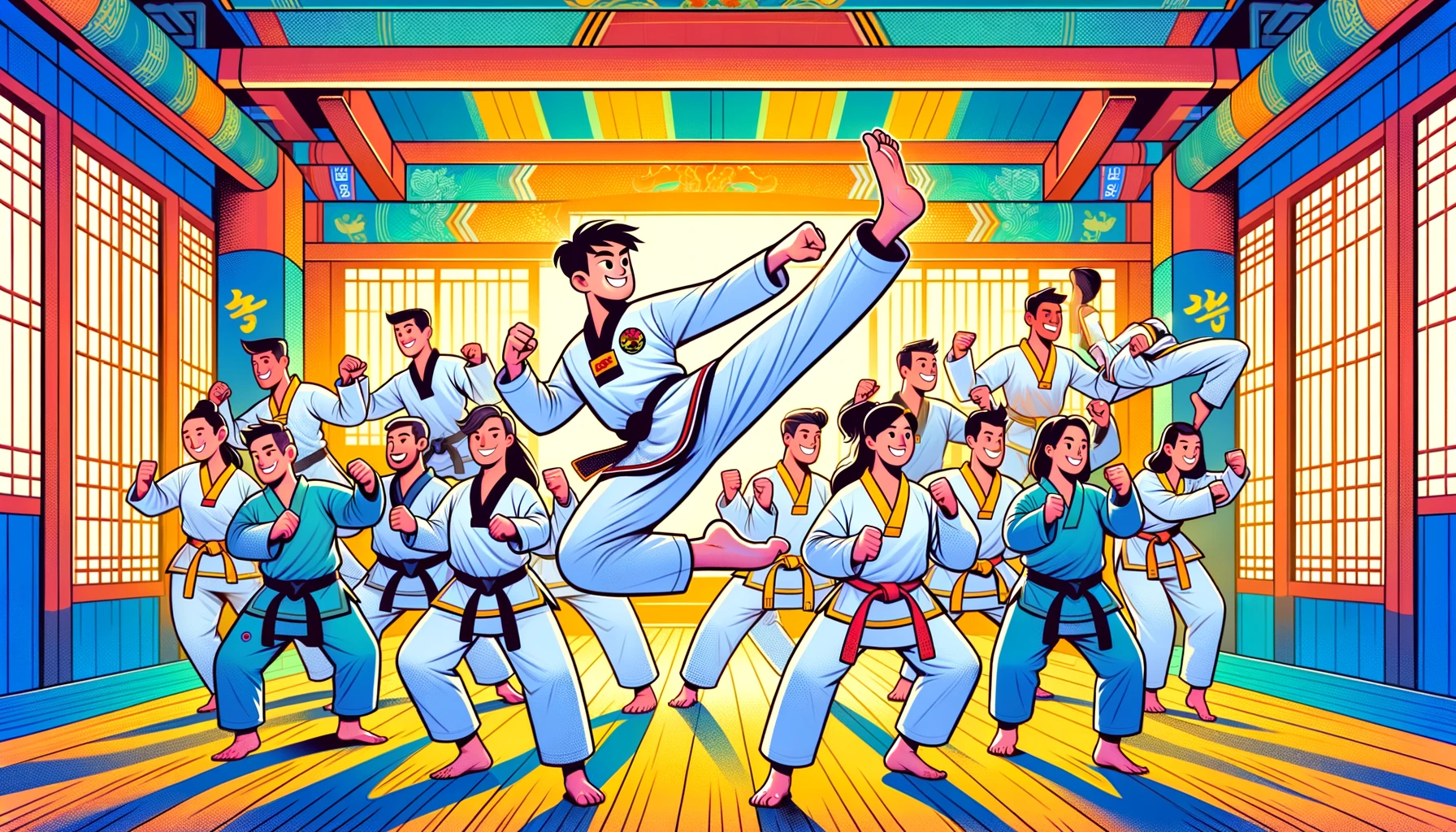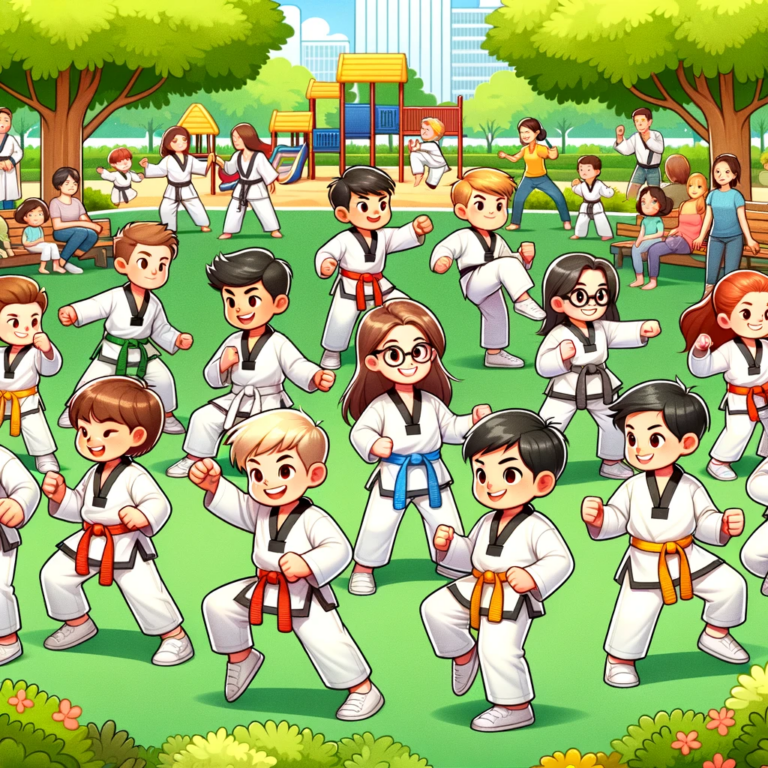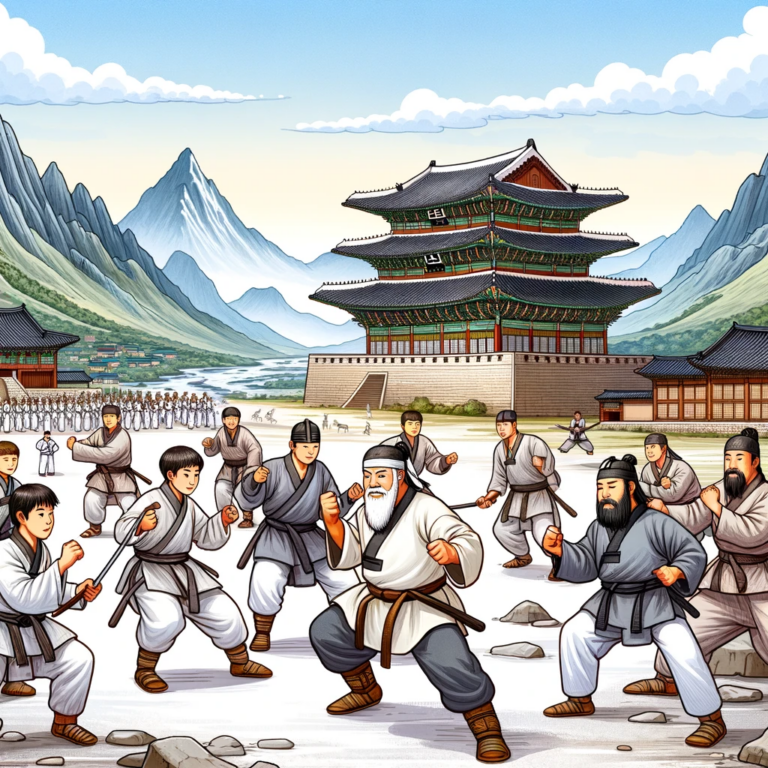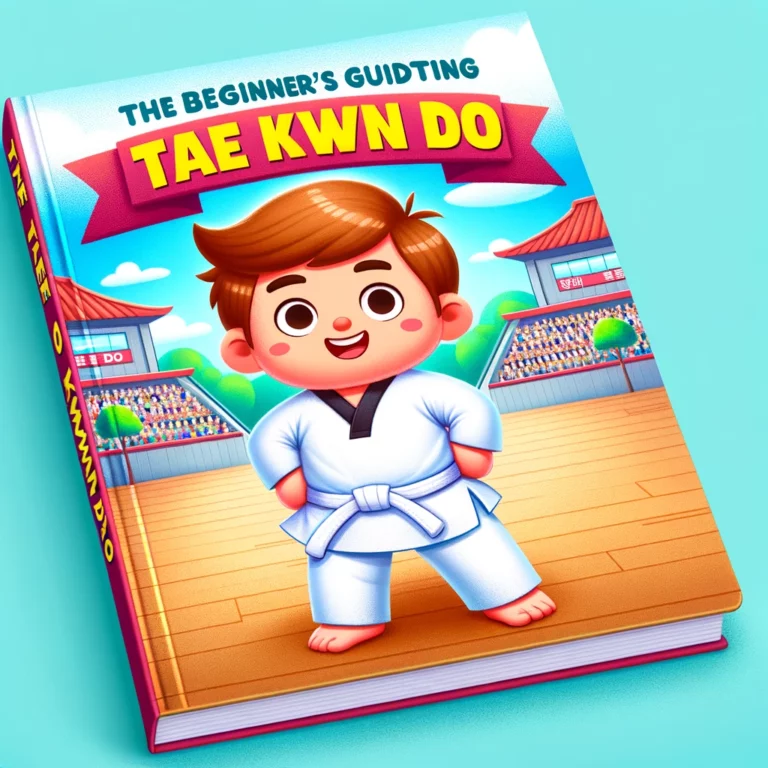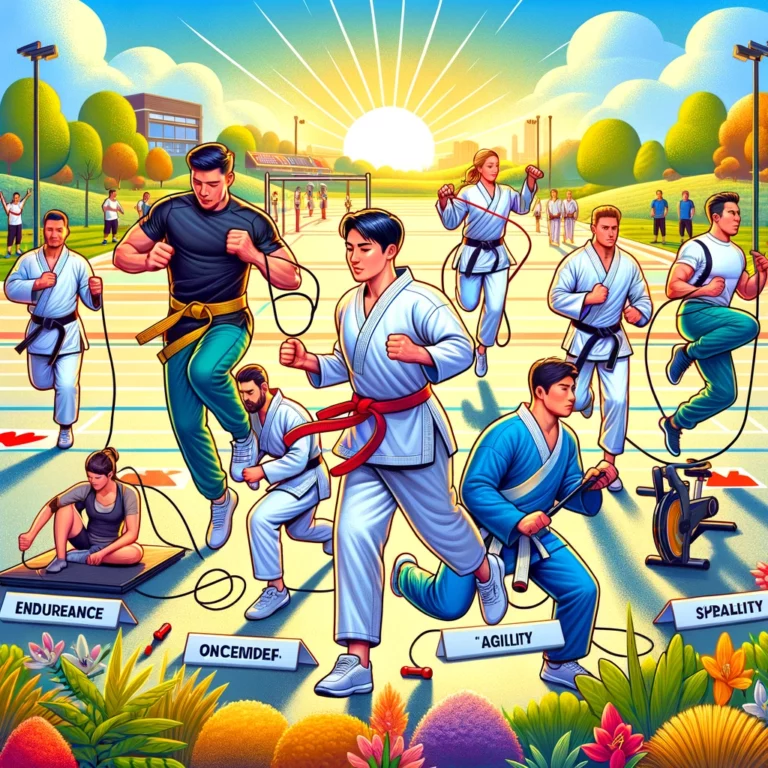Martial Arts Etiquette and Practices
What is Tae Kwon Do known for? This ancient Korean martial art captivates enthusiasts with its dynamic kicks and disciplined approach, blending physical prowess with mental strength. It not only promotes physical fitness but also instils values of respect, patience, and perseverance in its practitioners. This introduction delves into Tae Kwon Do’s global appeal, its foundational principles, and its profound impact on individuals across various age groups. As we explore the rich history, intricate techniques, and philosophy behind Tae Kwon Do, we uncover what makes it a revered form of self-defence and personal development.

In the world of martial arts, etiquette and practices play a vital role in shaping the character and mindset of practitioners. Understanding and upholding core values such as respect, discipline, and tradition is imperative to fully embracing the essence of martial arts.
Respect, a fundamental aspect of martial arts etiquette, is deeply ingrained in every interaction within the training environment. Showing respect to your instructors, fellow practitioners, and even the space creates a harmonious atmosphere promoting growth and development. Additionally, respecting the traditions and customs of the practised martial art style enhances the overall experience and deepens the connection to its historical roots. On the other hand, discipline is the cornerstone that shapes the mindset of martial artists. By adhering to a strict code of conduct and dedicating oneself to regular training and self-improvement, practitioners cultivate discipline both on and off the mat. This discipline fuels the drive and motivation to overcome challenges and achieve personal goals. With a strong foundation in respect and discipline, martial artists can embrace the rich traditions passed down through generations, creating a sense of unity and continuity within the community. The unwavering commitment to these practices instils valuable life skills and allows practitioners to fully immerse themselves in the art form, unlocking its true potential.
• Respect is fundamental to martial arts etiquette, promoting a harmonious training environment.
• Respecting instructors, fellow practitioners, and the training space fosters growth and development.
• Honoring the traditions and customs of the martial art style deepens the connection to its historical roots.
• Discipline is essential in shaping the mindset of martial artists.
• Adhering to a code of conduct and dedicating oneself to regular training cultivates discipline on and off the mat.
• Discipline fuels the motivation and drive to overcome challenges and achieve personal goals.
• Embracing rich traditions creates unity within the martial arts community.
• The commitment to these practices instils valuable life skills in practitioners.
• Fully immersing oneself in martial arts unlocks its true potential.

Understanding the importance of respect, discipline, and tradition in Tae Kwon Do
Respect, discipline, and tradition are the cornerstones of Tae Kwon Do, a martial art that originated in Korea. In the Tae Kwon Do community, these values are considered necessary and deeply ingrained into every aspect of the practice. From the beginning, Students are taught to show respect to their instructors, fellow practitioners, and the art itself. This respect is demonstrated through bowing, addressing seniors with honorifics, and following the established protocols during training. It is believed that showing respect can cultivate a humble and open mindset, which is essential for personal growth and development in Tae Kwon Do.
Discipline is another fundamental element in Tae Kwon Do. Through discipline, practitioners can push their limits and achieve personal milestones. Students learn the importance of perseverance and self-control by adhering to a structured training regimen and maintaining a solid work ethic. In Tae Kwon Do, discipline goes beyond the physical aspects of training. It also encompasses mental fortitude and staying focused on the task. Through discipline, practitioners improve their martial arts skills and develop valuable life skills that can be transferred to other areas of their lives.
Traditions in Tae Kwon Do represent the historical and cultural heritage of the art. These traditions are passed down from generation to generation, embodying the teachings of the art’s founders and masters. By engaging with the traditions, students gain a deeper understanding of the art’s roots and the principles it upholds. Whether performing certain rituals before and after training or participating in traditional ceremonies and events, these practices connect students to the spirit of Tae Kwon Do. The traditions instil a sense of identity, unity, and belonging within the Tae Kwon Do community, creating a cohesive bond among practitioners worldwide.
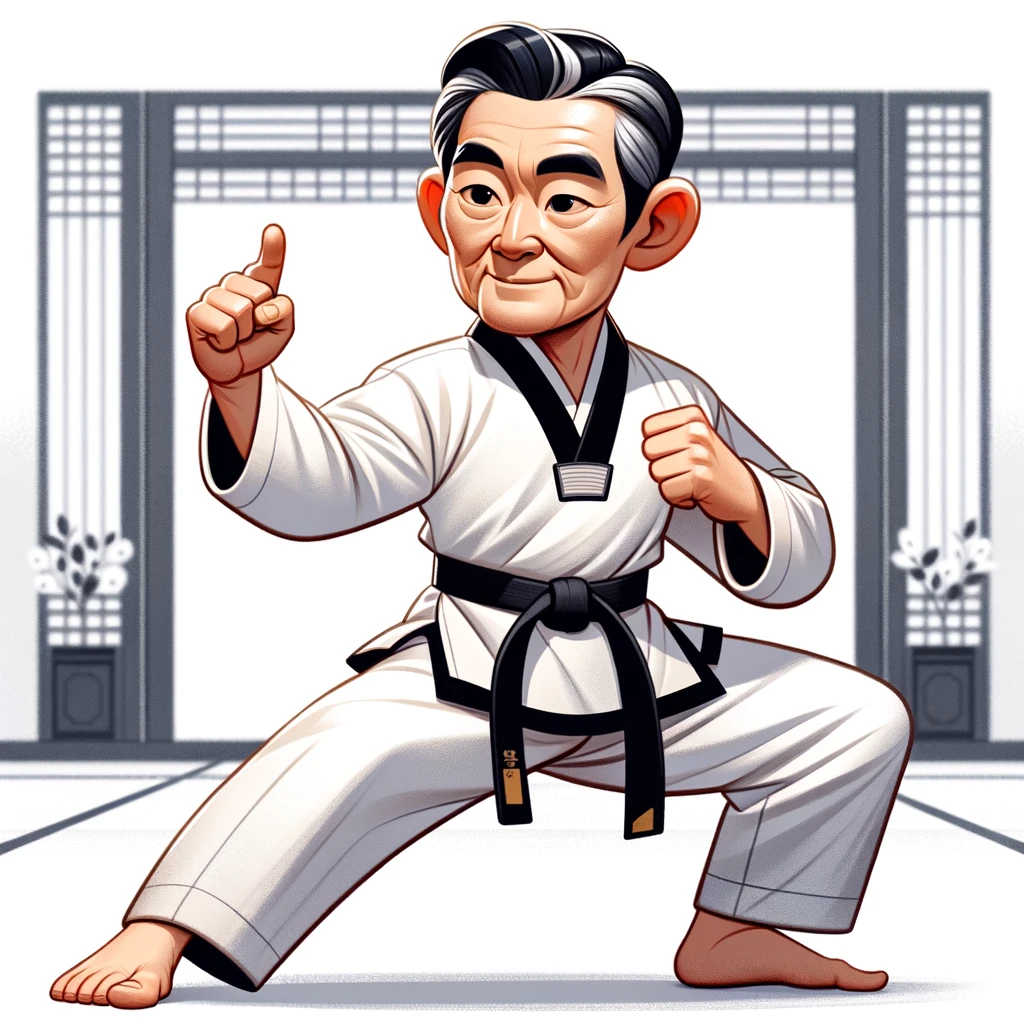
Forms (Poomsae) and Patterns
Forms (Poomsae) and Patterns are integral to Tae Kwon Do training. They are a series of predetermined movements designed to simulate combat scenarios against multiple opponents. These intricate sequences of kicks, punches, and blocks are meticulously choreographed and performed with precision and grace by practitioners of Tae Kwon Do.
The forms and patterns in Tae Kwon Do serve several purposes. First, they are essential tools for developing and refining techniques. Each movement in a form has a specific purpose, and practising them allows practitioners to work on their balance, power, speed, and accuracy. Students can train their muscle memory to execute techniques effectively without conscious thought by repeatedly performing the forms.
Furthermore, forms and patterns help practitioners to improve their focus and concentration. Each movement requires full attention and concentration, helping to develop mental discipline and control. They also improve flexibility, coordination, and overall body strength. Additionally, performing forms and patterns in sync with others in a group setting fosters a sense of unity and camaraderie among practitioners.
In conclusion, forms (Poomsae) and patterns are essential to Tae Kwon Do. They offer practitioners the opportunity to refine their techniques, develop discipline and mental focus, and enhance their physical attributes. Tae Kwon Do practitioners continue perpetuating this martial art’s rich tradition and heritage through forming and patterns.
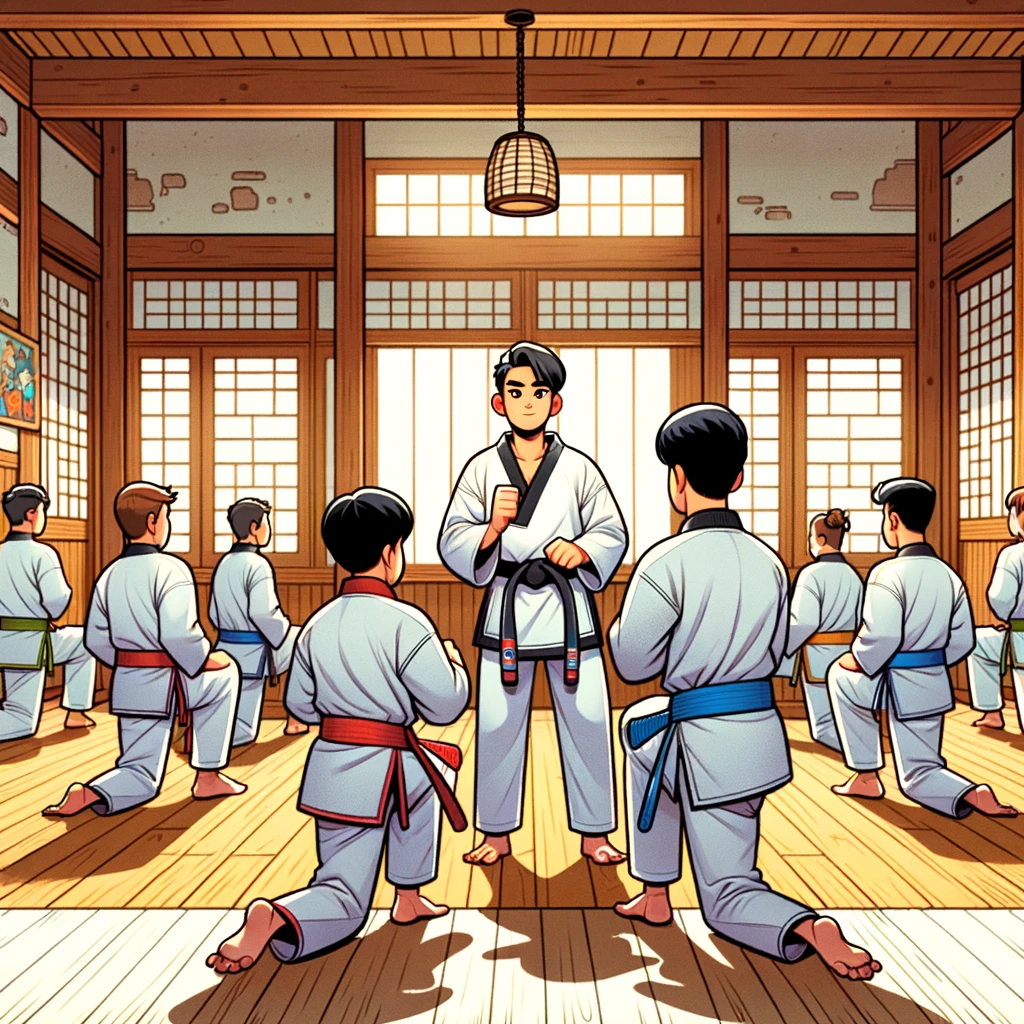
Exploring the intricately choreographed movements and their significance
The intricate choreographed movements in Tae Kwon Do, known as forms or poomsae, are a fundamental aspect of the martial art. These forms serve as a way for practitioners to practice and showcase a series of techniques in a precise and artistic manner. Each form consists of various stances, strikes, blocks, and kicks intricately woven together to create a seamless sequence.
The significance of these choreographed movements extends beyond their aesthetic appeal. Forms in Tae Kwon Do are not just a display of physical prowess; they embody the principles and philosophy of the martial art. Practising these intricate movements allows students to refine their techniques, strengthen their focus, and cultivate a deep understanding of the art. The precise execution of each movement requires discipline and concentration, fostering a sense of mindfulness and body awareness. Moreover, these forms are steeped in tradition and carry the martial arts legacy, connecting to its rich history. By studying and mastering these choreographed movements, practitioners pay homage to the lineage of Tae Kwon Do and the countless individuals who have dedicated their lives to its practice.

Kicking Techniques and Flying Kicks
Kicking techniques are a fundamental aspect of Tae Kwon Do training. This discipline strongly emphasizes mastering a variety of kicks, each with its unique purpose and execution. From powerful roundhouse kicks to lightning-fast front kicks, practitioners spend hours perfecting their technique and precision.
On the other hand, Flying kicks take kicking techniques to a whole new level. These awe-inspiring moves showcase the athleticism and agility of Tae Kwon Do practitioners. With speed, strength, and proper body control, practitioners can launch themselves into the air, executing spectacular kicks that defy gravity. Whether the spinning hook kick or the dazzling aerial axe kick, these flying kicks demonstrate a high skill level and add an entertaining and dynamic element to Tae Kwon Do’s performances.
Mastering kicking techniques and flying kicks in martial arts requires dedication, discipline, and continuous practice. Practitioners can unleash their kicks ‘ full potential through constant repetition, refinement, and understanding of the underlying mechanics. By honing their technique, Tae Kwon Do practitioners develop impressive physical abilities and cultivate a sense of inner strength and confidence. So, whether you’re a beginner or an advanced student, it’s worth investing time and effort into perfecting your kicking techniques and exploring the exhilarating world of flying kicks in Tae Kwon Do.
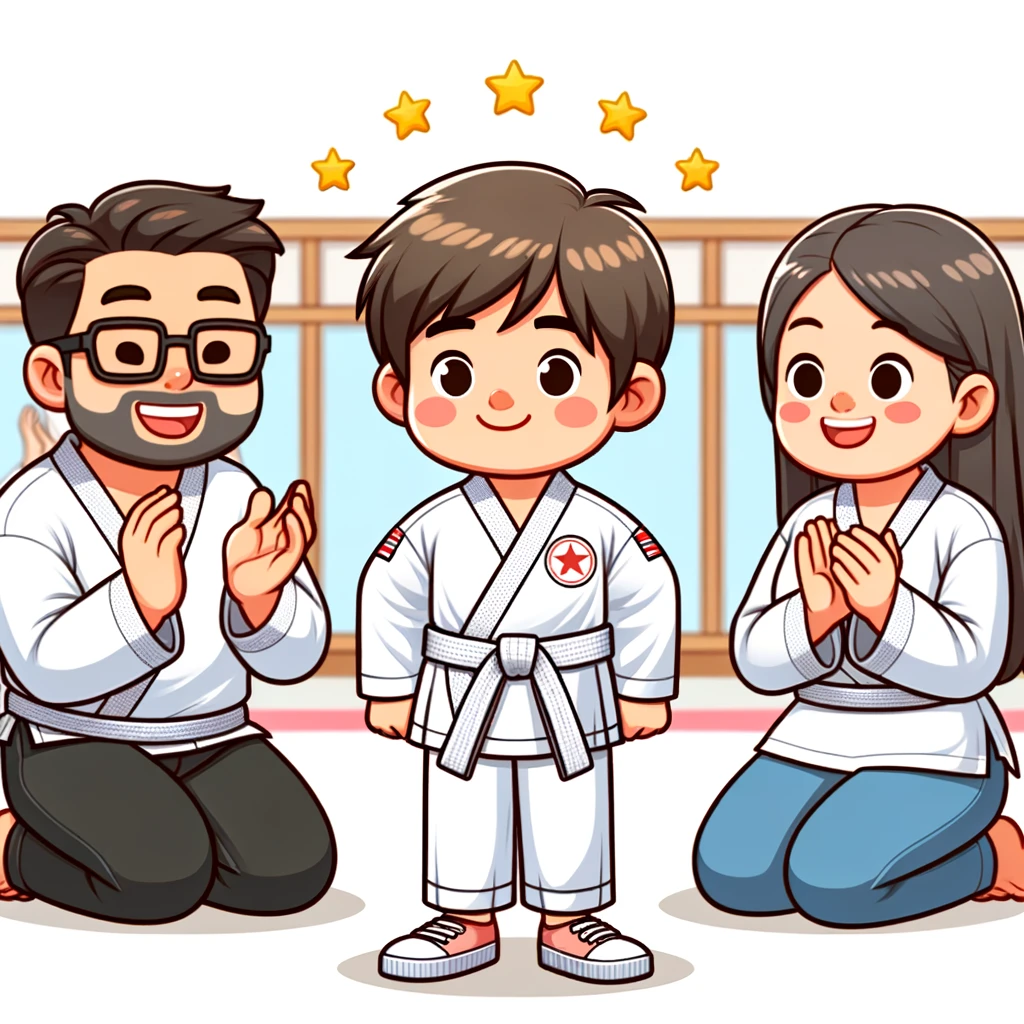
What is the significance of martial arts etiquette and practices?
Martial arts etiquette and practices play a vital role in Tae Kwon Do by promoting respect, discipline, and tradition. They help instil values of honour, humility, and self-control.
How does understanding respect, discipline, and tradition contribute to Tae Kwon Do?
Understanding and embracing respect, discipline, and tradition in Tae Kwon Do fosters a positive training environment, instils self-discipline, and promotes a deeper connection to the martial arts heritage.
What are forms (Poomsae) and patterns in Tae Kwon Do?
Forms, also known as Poomsae or patterns, are a series of choreographed movements that practitioners perform to demonstrate their mastery of techniques, improve focus, and develop muscle memory.
What is the significance of exploring the intricately choreographed movements in forms?
Exploring the intricately choreographed movements of forms helps practitioners understand the flow and application of various techniques, develop balance and coordination, and enhance their overall performance in Tae Kwon Do.
What are some standard kicking techniques in Tae Kwon Do?
Tae Kwon Do incorporates a wide range of kicking techniques, including front kick (ap chagi), roundhouse kick (dollyo chagi), side kick (yop chagi), hook kick (Golcha chagi), and back kick (dwit chagi), among others.
What are flying kicks in Tae Kwon Do?
Flying kicks are advanced techniques in Tae Kwon Do, where practitioners generate power and height to execute impressive aerial kicks. These kicks require exceptional skill, agility, and timing.
Are flying kicks practical in self-defence situations?
While flying kicks may not be practical in most self-defence situations due to their complexity and potential loss of balance, they testify to a practitioner’s skill and athleticism in Tae Kwon Do competitions and demonstrations.
How can I improve my kicking techniques in Tae Kwon Do?
To improve your kicking techniques in Tae Kwon Do, focus on proper body alignment, maintain flexibility through regular stretching, practice dynamic and static drills, and seek guidance from experienced instructors. Consistent training and dedication are essential.

